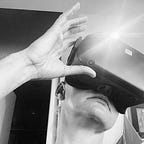What if Every App Was a Music App?
Flipagram’s strategic alignment with record labels may represent the future of apps and music integration
Last week I wrote about a world where the only music app is a big “play music” button on your phone, and all of your personal data is seamlessly analyzed in order to serve you the perfect music for that exact moment. This week, I want to spin out something a little different — what if, instead of every app integrating with music, music was integrated with every app?
This comes on the heels of Flipagram’s eye-popping $70 million raise, and the announcement that the company has struck deals with all three majors labels, two big indie distributors, and several music publishers. Flipagram, for those of you who don’t know, allows users to put a collection of photos together to flip by very, very quickly. It makes the laser lights at an EDM show look slow and sedate. I’m shocked the app doesn’t come with a warning that it might trigger a seizure.
But health warnings be damned, the app has hockey stick growth, and many of the users were adding music to their flipagrams, in essence creating little music videos. Plenty of artists are jumping on board to create their own flipagrams, including Zedd, Taylor Swift (of course), and Pitbull (double of course). It’s clever as hell, and could be another nice revenue stream for artists who use it.
So, could this be the start of something bigger? Rather than creating standalone music services, what if the future is music being embedded in every service? Rumors are circulating that Facebook is starting some sort of streaming product; when they issued a denial it sounded like something Apple would have said to throw people off course (“the way we see it, it’s not a ‘streaming service,’ it’s a ‘social music listening platform’”). Twitter has had plenty of stutter steps with music (We Are Hunted, RIP) and some talent churn, but that’s not to say they couldn’t do something interesting if they tried. Facebook could just buy Flipagram and allow users to embed songs with every photo. Soundtracking might have been killed off recently, but maybe they were just too early. Vine just hired someone from Billboard and looks like it is beefing up its music team. Etc, etc.
Not every app needs music, of course. My Chase bank app shouldn’t be serving me songs, unless they are very soothing and play around tax time. There’s a risk of apps falling prey to gimmicks with music — as fun as it sounds to have a mapping app that played location specific tracks, in reality it would likely be annoying. But there are enough social apps consuming enough of everyone’s time that it could account for a serious chunk of music consumption.
In that case, what happens to the streaming services? You’ll still need them for workout playlists and road trips (please, please do not use Flipagram while driving), but the amount of user hours could go way down if people start consuming music elsewhere, while doing other things. Why listen to a song when you can listen to a song and look at pictures, or social posts. What if music is a feature after all, and not a product?
I’ve written about this before, but it’s worth pointing out that as Flipagrams become the way more people consume songs, the concept of a song might need to change. Many Flipagrams thus far have been clips of tracks, but what if artists started making music specifically geared to backing Flipagram slideshows, with no goals beyond that? Rather than depending on radio programmers or streaming playlist curators to break a track, an artist made something that was so perfect for Flipagram that it was their breakthrough? Quick, someone write a fifteen-second end-of-summer anthem!
If we embed music into every corner of our lives, then what’s the value in having a discrete place to consume it? Streaming services, thus far, have done a very poor job defending themselves when trying to address this question. Spotify killed its app platform and has played down many of its social playlisting features; there is no way to interact with or remix Spotify beyond creating playlists. Apple Music’s Connect feature allows user commenting on artist-provided content, but nothing beyond that, at least not yet.
What if the true use for music is not to be consumed but to act as a platform for further creativity? Sure, organizing a bunch of selfies to flash by over a track isn’t exactly painting the Sistine Chapel, but it’s something beyond passively consuming a song, and provides an intensely personal connection for the user. It also opens up to pool of potential connected users beyond those who want to create videos or dances, two ways people have personalized tracks in the past.
The other big X factor in all this is how all this personal use can benefit artists. Adding up fractions of pennies from a track backing a social post probably isn’t the strongest business model. In addition to striking deals with labels and publishers, apps like Flipagram should start doing deals with ticketing and merch providers to allow people to seamlessly connect with artists out of the app. They could even strike deals with platforms like Huzza, which allow users to “tip” artists they like, a boon for smaller artists or those not on tour.
Flipagram’s moves probably won’t spell the end for streaming services any time soon, but they should keep an eye on the deal going forward. One way consumption of content is starting to seem antiquated, and if streaming services want to keep up and attract more young listeners, they should start looking at the relationship as a two-way street.
What do you think? Please log in and respond below.
